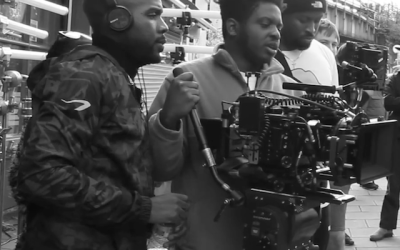Snap Inc shares plunged 14% on Wednesday after the company’s annual results came in below expectations. Hit by weakening ad revenues, the owner of mobile-first platform Snapchat reported tepid growth, reduced profitability and full year losses of $1.43m – its biggest reversal in years. Below, The Drop takes a look at the key points in the results and their implications for digital content creators.
Results summary: the good, the bad and the ugly
First, the good news… Snap kicked off its results by pointing to an increase in daily active users, up 17% year on year to 375 million. At the beginning of the pandemic, the platform was hovering around the 230 million mark. Although the platform has lost ground to the likes of TikTok and YouTube Shorts, it still reaches 90% of 13-24 year-olds in more than 20 countries. In terms of future growth, the service is still only at 25% smart phone penetration in North America, 16% in Europe and 7% in the rest of the world, so it sees “significant opportunity to expand our community.”
And now the bad…unfortunately, the growth in active users couldn’t disguise a lacklustre performance on the revenue front. For the full year, Snap generated $4.6 billion in revenues (up 12%), with the fourth quarter contributing $1.3 billion (up 0.1%). The slow growth reported in Q4 is not the end of the problems for Snap. With the ad market slowing, the firm is now anticipating a revenue decline of between 2%-10% – whereas analysts expected a small increase. CEO Evan Spiegel said: “We face significant headwinds as we look to accelerate revenue growth.”
Analysts are increasingly unnerved about the platform’s prospects. Reported in Yahoo Finance, Jefferies analyst James Heaney said: “We are concerned that Snap’s issues are intensifying, as recent ad platform changes further pressure revenue growth and depth of engagement on friend stories again decreasing year over year. Despite recent cost savings initiatives, we expect intensifying margin pressures.”
What’s the company doing about it?
Spiegel claims Snap is “making progress driving improved return on investment for advertisers and innovating to deepen the engagement of our community”.
He has identified three key investment priorities:
Investing in products and platforms to sustain community growth
Investing in Snap’s direct response advertising business
Investing in areas critical to the long-term opportunity of AR
In terms of Snap’s specific actions to regain momentum, they break down as follows:
Cutbacks: Some key decisions were announced back in September 2022, when the company revealed it was cutting 20% of its workforce and halting its originals programme, which had resulted in the creation of 150 digital-first shows since 2018. Remember, YouTube has also cut its originals programme – indicating a general belief among platforms that they are better off relying on creative partnerships.
Increased focus on shortform: The platform is expending more of its energy on shortform content (via Spotlight). Looking at the Q4 results Snap says total time spent watching Spotlight content grew over 100% year-over-year. With YouTube Shorts switching on monetisation this week, shortform is clearly a top priority for platforms.
Doubling down on established media players: The company says it has 900 content partners, of which 17 reached 50m Snapchatters in Q4 2022. One thing that’s noticeable is how important old school media companies continue to be. Through broadcast partnerships with beIN SPORTS, ITV, MediaPro and Bell in Canada, among others, 60m Snapchatters watched World Cup Stories content on Snapchat and over 285m engaged with World Cup AR. Across 2022, the company renewed its partnerships with UFC and the Washington Post in the US. Internationally, it expanded its partnership with Groupe M6 in France and signed new agreements with BBC Studios in the UK, G+J Medien (RTL) in Germany, and Totem Global in Australia.
Driving subscriptions: In Q4 2022, subscription service Snapchat+ reached over 2 million subscribers – each paying around $3.99 per month. According to Snap, Snapchat+ offers “exclusive, experimental, and pre-release features, and in Q4 we launched new features such as Custom Story Expiration and Custom Notification Sounds, providing subscribers with over 12 exclusive features”. This is still a small part of the company’s business – but it is growing quite quickly. It was only launched in mid-2022 and had 1.5m subscribers by the time of its Q3, 2022 results.
New tools for brands: Snapchat will live or die according to its ability to attract advertisers. In its Q4 results, it said it has made Conversions API (CAPI) more accessible to advertisers on its platform, and accelerated commerce integrations through the launch of a partnership with BigCommerce, enabling tens of thousands of merchants to seamlessly sync catalogs and run Dynamic Ads. The company has also partnered with Smartly.io to unlock growth and drive performance through real time automation. Through Smartly.io’s creative and campaign management tools, brands can tap into their automated ads by scaling thousands of targeted versions.
Augmented Reality: Snap’s big bet
The other area that Snap has really been pushing is its augmented reality (AR) platform. In its results presentation it cites agency network WPP as saying: “AR has a major role to play in the future of marketing and commerce, from virtual try-on to immersive digital experiences. Snap has built an impressive AR platform and we are delighted to partner with them to ensure our people can access Snap’s latest AR technology and develop richer commerce solutions for clients and their customers.”
Snap is backing AR to play an increasingly significant role in purchasing behaviour – which is why it wants it to be part of the platform DNA. In its latest results presentation, it quotes research which suggests retail returns are “a $550bn problem which AR can help fix”. AR-guided purchases can lead to a 25% decreased in returns, says Snap.
Audience usage and features: Snap says over 300,000 AR creators and developers have built more than 3 million AR Lenses. In its latest Lens Studio release, Snap unveiled several new features including garment, earring, and wrist wear try on.
Brand partnerships: Among several campaign case studies, Snap says “We powered more than 161 million product trials by over 35 million Snapchatters for Walmart, leveraging Catalogue-Powered Shopping Lenses at-scale. Luxottica Sunglass Hut drove 14 million try-ons through Catalogue-powered Shopping Lenses.”
Innovations: The platform launched a new Camera Kit integration with H&M enabling an AR try-on experience of its collection of immersive AR fashion, co-designed by H&M and the Institute of Digital Fashion. For the release of Avatar: The Way of Water, Snap teamed up with Disney to create an AR Lens that turns any user into a Na’vi.
Final Thought
There’s no question that Snap is right to point to the potential upside for its business – and it has made good progress with Snapchat+, Spotlight and AR. Its biggest problem, however, is the strength of the competition. 2023 may well prove to be a pivotal year as it seeks to wrest back the momentum from TikTok, YouTube Shorts and Meta-backed Reels, and re-establish its relevance to young mobile users.
Snap has scheduled an Investor Day on Feb. 16, set to include presentations by Spiegel, CTO/co-founder Bobby Murphy and other execs. This will be a key opportunity for senior management to expand on the next phase of its strategy.





